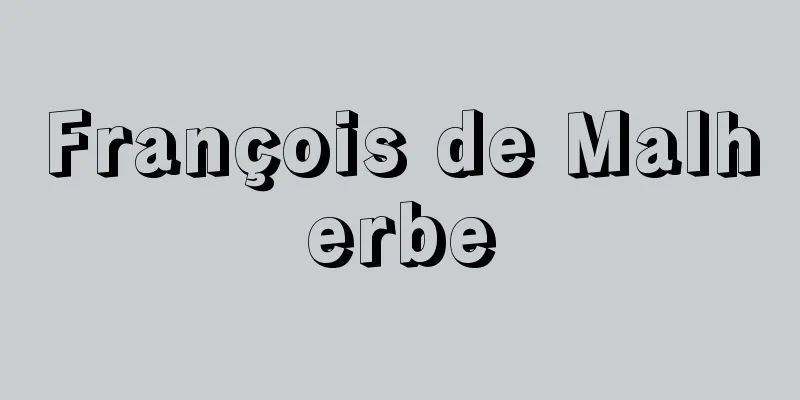Style - Buntai (English spelling) style English

|
A style of sentence structure. It often refers to a unique style of sentence structure that is found in each linguistic expression. There are writing styles that show personal characteristics and those that are socially customary. Linguistic expression reflects the way the artist thinks. If an artist has a unique way of thinking, this will be reflected in the expression, and a unique style will be created. From this point of view, it can be considered that each writer has their own writing style. Conversely, it can also be said that having a unique writing style is important. Socially customary writing styles have been formed over the history of writing, and artists will choose their writing style based on the situation, content, etc. of the expression. The latter style can be categorized as follows: [1] Literary style: Chinese style, record style (Azumakagami style), Senmyo style, Konko style (mixed Japanese and Chinese), Japanese style, elegant style, and Sourou style; [2] Colloquial style: Polite style, ordinary style. Chinese style is written using only Chinese characters and following the order of words in Chinese. It was used for official documents throughout the Nara and Heian periods. Record style is written using only Chinese characters and mostly follows the grammar of Chinese, and can be considered a type of Chinese style, but it is a mixture of expressions based on Japanese grammar that are not found in formal Chinese, and different phrases from pure Chinese. This type of writing is also called Japanese-style Chinese or variant Chinese. It is more accurate to say that the writer did not intentionally choose this style, but rather that this style was the result of an attempt to write Chinese. This style is often seen in Chinese writings written by Japanese people, including the Kojiki, but it is particularly common in Chinese diaries written by nobles in the Heian period, and is particularly prominent in the Azuma Kagami, an official record of the Kamakura shogunate, so it is also called the Azuma Kagami style. The Senmei style is prominent in the records of imperial edicts in the Shoku Nihongi, and is a style that uses only Chinese characters, both large and small, for ease of reading. The Wakan konkō style is often seen in military chronicles from the Kamakura period onwards, and is a style that combines the Japanese style with the reading of Chinese classics, making use of the merits of both the elegance of Japanese writing and the rhythmic conciseness of Chinese writing. The Japanese style was established in literary works of the Heian period, and is thought to have been written mainly in hiragana and based on the spoken language of the time, and is a style that is thought to reflect the unbroken thoughts of people. The elegant style was written after the Kamakura period, especially by Edo period scholars of Japanese classics, in imitation of the Japanese style of the Heian period. It incorporates later phrases and is not the same as the Japanese style of the Heian period. The sho style is characterized by the fact that it often uses "sho" to show respect to the recipient. This style became the mainstream for letters, as seen in the letter etiquette book "Teikinourai" from the beginning of the Muromachi period. Colloquial writing style is written in a style that is as close as possible to the spoken language of the time, and is divided into polite style (desu/masu style), which uses polite words such as "desu, masu" at the end of sentences, and plain style (da/daru style), which does not; the former is more conscious of the reader and is more colloquial than the latter. [Akiho Yamaguchi] Literary styleThe author's personality or ideas are expressed in the words and phrases that make up the sentence and how they are put together, giving the sentence a unique character as a whole. However, from Greece until the Renaissance, the issue of style was seen as a matter of formal refinement, with the aim of unifying and strengthening the sentence, but in the 18th century, the words of the French naturalist Buffon, "The writing is the person," became widely known, and around the same time, the development of modern literature began, and the view that style is an expression of personality became common. [Hideo Odagiri] Style and author's personalityIn order to enhance the expressive effect of a work, a writer may consciously choose words and skillfully assemble them to create a unique expression, but sometimes a unique piece of writing is born when the writer is putting all his or her effort into expressing something as a writer, and the writer's unique characteristics naturally come out strongly in the work. Furthermore, such unique characteristics naturally (or consciously) strongly express the characteristics of the era or the class or hierarchical characteristics of the author, as the author is a child of the era or a child of a class or stratum, and become representative of the era style, class style, stratum style, etc. This is different from the various styles such as Japanese style, Chinese style, Chinese reading style, Western style, or epistolary style, diary style, record style, argument style, etc., which are, so to speak, external restrictions for the author, and the characteristics of the era style, class style, etc. cannot be strong unless they come from within the author. Even in the case of Japanese style or epistolary style, the writer has managed to create his own unique style while following the format, as is evidenced by many such works. Style is a unique feature that is directly related to the text itself, but to make it possible, the writer must have his/her own unique judgment, sense, and thinking, and it depends greatly on the writer's thoughts, literary tendencies, and their vitality. Although it can be covered to a certain extent by skilled training in rhetoric and sentence structure, in larger works, the true nature of the style is immediately revealed. The unique vitality of style is often due to the vitality of the writer's thoughts and literary tendencies themselves. This is also the reason why stylistics often immediately turns into works and writers. In addition, style involves various detailed and concrete issues, such as the free use of parts of speech, which can be effective in various ways in relation to grammar, the way words are arranged, phrases, clauses, and sentences are constructed, the consideration of phonological combinations, and more. Furthermore, a thorough analysis of style can sometimes lead to the elucidation of the internal structure of the work and various inclinations of thought that the author himself was not even aware of. [Hideo Odagiri] StylisticsThe study of style has been conducted since the time of classical Greece, and today it is usually called "stylistics" (English), stylistique (French), or Stilistik (German). Stylistics has existed as a part of rhetoric since ancient times, and in modern times it has gradually shifted from formalistic discussion of poetic, novelistic, and dramatic style to discussion of the individual style of authors, becoming more empirically and theoretically precise, and also exploring connections with the history of the mind and literary trends, as well as personalities and biographies. In Japan, stylistics began to be studied professionally from the late 1930s, and the Japan Stylistic Association was organized by experts in the field. [Hideo Odagiri] "Stylistics by Nishio Mitsuo (1963, Hanawa Shobo)" ▽ "Modern Writing Psychology by Hatano Kanji (1950, Shinchosha)" ▽ "Introduction to Stylistics, edited by the Japanese Stylistics Association (1966, Sanseido)" Source: Shogakukan Encyclopedia Nipponica About Encyclopedia Nipponica Information | Legend |
|
文構成の様式。多く、それぞれの言語表現に認められる、独自な文構成の様式をいう。文体には個人的特徴を示すものと社会習慣的なものとがある。言語表現には表現者の考え方が反映する。表現者が、独自の考え方を有していれば表現に反映し、独自の文体が成り立つことになる。作家が、それぞれ自分の文体をもつということが、その点から考えられることになる。逆に、独自な文体をもつことが重視されることにもなる。社会習慣的な文体は、文章の歴史のなかで形成されたもので、表現者は、表現の場面・内容等から文体の選択を行うことになる。 後者の文体は、次のように分類できる。〔1〕文語体 漢文体、記録体(東鑑(あずまかがみ)体)、宣命(せんみょう)体、和漢混淆(こんこう)体、和文体、雅文体、候(そうろう)文体、〔2〕口語体 敬体、常体。漢文体は漢字だけを用い、漢文の語序に従って記されたもの。奈良・平安時代を通じ、公的な文章に用いられていた。記録体は漢字だけで、多くは漢文の語法に従って書かれたもので、漢文体の一種といえるが、正式の漢文にはない日本語の語法に基づく表現が入り込んで、純粋な漢文とは異なる言い回しの混じたものをいう。和習漢文、変体漢文などともいわれる文である。表現者がこの文体を意図的に選択したというよりも、漢文を書こうとしたものが結果としてこの文体になったというべきである。この文体は『古事記』をはじめ、日本人の書いた漢文にはままみられるが、とりわけ平安時代の公卿(くぎょう)の漢文日記はこの文体が多く、鎌倉幕府の公式記録である『東鑑(吾妻鏡)』に顕著であるので「東鑑体」ともいう。宣命体は『続日本紀(しょくにほんぎ)』中の宣命の記録に顕著で、漢字だけを大字、小字を取り交ぜて用い、読みの便を図った文である。和漢混淆体は、多く鎌倉時代以降の軍記物にみられ、和文体を基調に漢文訓読調が交ざったもので、和文のみやびと漢文のリズミカルな簡潔さの双方のよさが生かされる。和文体は平安時代の文学作品に確立したもので、平仮名をおもに用い、当時の話しことばを基調にして書かれたと推測され、人々の連綿とした思いが反映したと考えられる文体である。雅文体は、鎌倉時代以降、とくに江戸時代の国学者を中心に、平安時代の和文体を模して書かれたもの。後世の言い回しが交ざり、平安時代の和文のままではない。候文体は、相手への敬意を「候」で表すことが多い点に特徴がある。室町時代初めの書簡作法書『庭訓往来(ていきんおうらい)』にこの文体がとられるなど書簡文の主流となった。 口語体の文体は、その時代の話しことばに限りなく近い語法に従って書かれ、文末に「です、ます」といったていねいの意を添える語を用いる敬体(です・ます体)と、それを用いない常体(だ・である体)とに分けられ、前者は読み手を強く意識したもので、後者よりも話しことば的である。 [山口明穂] 文学における文体作者の個性または思想が、文章を構成する語句やその組み立て方に現れて、全体として一つの特色をなしているもの。ただし、ギリシア以降ルネサンス期までは、文体の問題は形式上の整備の問題として文章の統一と強化が目ざされたが、18世紀に「文は人なり」というフランスの博物学者ビュフォンのことばが広く知られ、同じころから近代文学の発展が始まるとともに、文体を個性の表現とみる見方が一般化した。 [小田切秀雄] 文体と作家の個性作品での表現効果を高めるために、ことばを選びこれを巧みに組み立てていくこと、それを意識的に行うなかで個性的な表現をつくりだしていく場合もあるが、作家としての何ものかを表現するために全力を傾注しているときに、その作家の個性的特色がおのずとそこに強烈に現れてこずにはいない、という経過で個性的な文章が生まれることもある。なお、そういう個性的な特色は、作者が時代の子、階級・階層の子であることに伴って、おのずと(または意識的に)時代的特色または階級的・階層的な特色を強く表現することになり、時代文体、階級文体、階層文体等の代表的なものとなる。これは、作者にとっていわば外部からの規制となる和文体、漢文体、漢文読み下し体、洋文体、または書簡体、日記体、記録体、論議体等の諸文体とはまた別のことで、時代文体、階級文体等の特色は作者の内部からのものでなければ強力なものになることができない。その和文体等または書簡体等の場合でも、その形式に従いながら作家が独自な文体を実現していることは、その種の多くの作品によって証(あか)したてられているとおりである。 文体は、直接的にはもっぱら文章そのものにかかわってつくりだされた個性的特色だが、それが可能になるためには作家による個性的な判断、感覚、思考がなければならず、作家の思想や文学傾向やそれらの活気やによるところが大きい。措辞法や文構成法についての職人的な修練で、ある程度はまかなえても、すこし大きな作品ではたちまちそれは実体を露呈してしまう。文体の個性的な活気は、その作家の思想、文学的傾向そのものの活気によることが多い。文体論がただちに作品論、作家論になってしまうことが多いのも、こういうところに根拠がある。なお、文体には、文法との関係でさまざまに効果的でありうる品詞の自由な使い方、また、語の順序から句・節・文の構成の仕方のこと、音韻の組合せへの配慮、そのほか細かい具体的な問題がいろいろとあり、さらにはまた、文体を徹底的に分析していくことによって、作者自身さえ意識していなかった作品の内部構造や思考のさまざまな傾斜などの解明に至る、ということもある。 [小田切秀雄] 文体論文体研究は古典ギリシアの時代から行われ、現在では普通「文体論」stylistics(英語)、stylistique(フランス語)、Stilistik(ドイツ語)という形をとっている。古代から修辞学の一部として文体論があり、詩文体、小説文体、劇文体のそれぞれについての形式主義的な論から、近代に入るとともにしだいに作家の個性的な文体についての論に移行し、実証的または理論的に精密化するとともに、精神史や文芸思潮史等とのかかわりや人格、伝記等とのかかわりなどをも追求の対象とするようになっている。日本では1930年代末から文体論が専門的に研究されるようになり、その専門家たちによって日本文体協会が組織されている。 [小田切秀雄] 『西尾光雄著『文体論』(1963・塙書房)』▽『波多野完治著『現代文章心理学』(1950・新潮社)』▽『日本文体論協会編『文体論入門』(1966・三省堂)』 出典 小学館 日本大百科全書(ニッポニカ)日本大百科全書(ニッポニカ)について 情報 | 凡例 |
>>: Punta Arenas (English spelling)
Recommend
Viviparidae
…A general term for freshwater snails in the fami...
Internal combustion engine
A type of heat engine that burns fuel in a gas (m...
Barker, Ernest
Born: September 23, 1874, Cheshire [Died] February...
Portativ
…There are various sizes of organs depending on t...
Umru Al-Qais - Umru Al-Qais
...From about the 8th century, the ancient poetry...
Bukovskii, VK (English spelling) BukovskiiVK
...Writer Yu.M. Daniel and Gorky Institute of Wor...
Rochdale
A city in the northeast of the Greater Manchester ...
Medieval Hebrew
…It was probably in the second half of the 1st ce...
Isauri; the Dynasty of Isaurus
A dynasty of the Byzantine Empire (717-802). It wa...
Udain - Udain
…It is located near Patna, the capital of Bihar, ...
sit-in
…In February 1960, several black college students...
Kaneyama cedar
...The main settlement is Kanayama, which is on N...
Olingo - Apple (English spelling) olingo
A general term for animals in the Olingo genus of...
Karamatsusou - Karamatsusou
A large perennial plant of the Ranunculaceae fami...
Local road tax
It is a national tax introduced by the Local Road...









